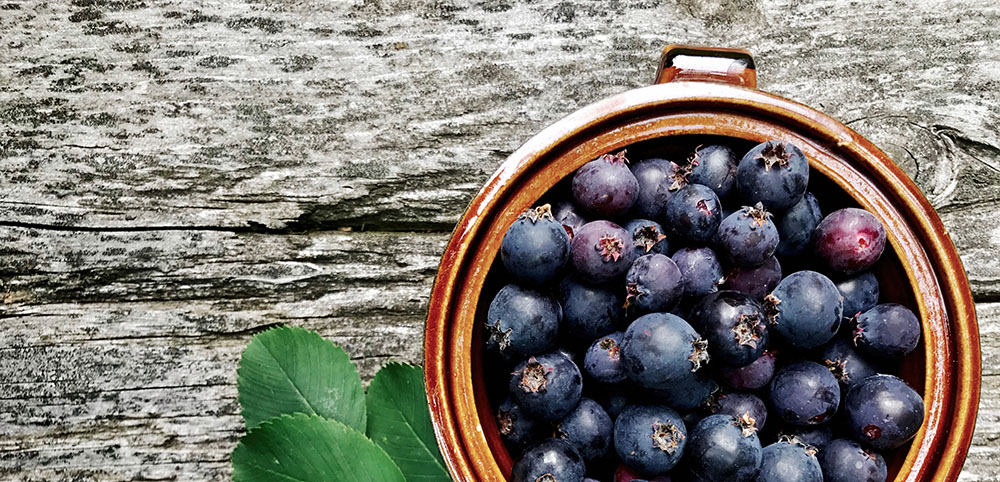Saskatoon berries: Canada’s hidden gems

You may already know how mouth-watering freshly picked strawberries or raspberries are, but have you tried Saskatoon berries? Unless you live in the Canadian Prairies, you probably aren’t familiar with these delicious purple-blue fruits that often get mistaken for blueberries.
We’re going break down the history of these tiny berries, explain why they make a healthy addition to your diet, and give you an idea of how you can use them in your cooking.
What are Saskatoon berries?
If you live outside of Western Canada, you might recognize this fruit by several other names such as Prairie berries, shadbush or Juneberries. The name Saskatoon berry (along with the name of the city Saskatoon) comes from the Cree word misâskwatômina (mis-sack-qua-too-mina).
No matter what you call these berries, you can find them ripening between June and July on hardy shrubs strong enough to survive the -50°C winters of western Canada. They’ve only been commercially available for the past 30-40 years. Today, the vast mast majority come from the provinces Saskatchewan, Manitoba, Alberta or British Columbia. However, they grow as far north as Alaska and as far south as Colorado.
What do Saskatoon berries taste like?
While Saskatoon berries may look like blueberries, they’re more closely related to apples. They taste sweet like strawberries or grapes but also have a subtle nutty taste like almonds. Their fleshy texture and sugary flavour make a great filling in desserts or topper on meat dishes.
Saskatoon berry nutrition
Like most berries, Saskatoon berries are very nutrient-dense and are a great source of antioxidants and heart-healthy flavonoids. They are also a great source of several essential nutrients including calcium, fibre, iron, manganese, magnesium and vitamin E.
How to enjoy Saskatoon berries
The indigenous people in Western Canada traditionally used Saskatoon berries in meat soups and used the leaves to make tea. Their sweet taste makes a great addition to barbecue sauces or glazes like in this meatball recipe.
You can also use this fruit in most dessert recipes that traditionally use blueberries such as pies, muffins and jams. If you’re looking for a fall recipe to replace your usual apple crumble, try this Saskatoon berry crumble recipe.
If you’re a wine aficionado, you may even enjoy making your own Saskatoon berry wine at home. Here’s a recipe to get you started.
